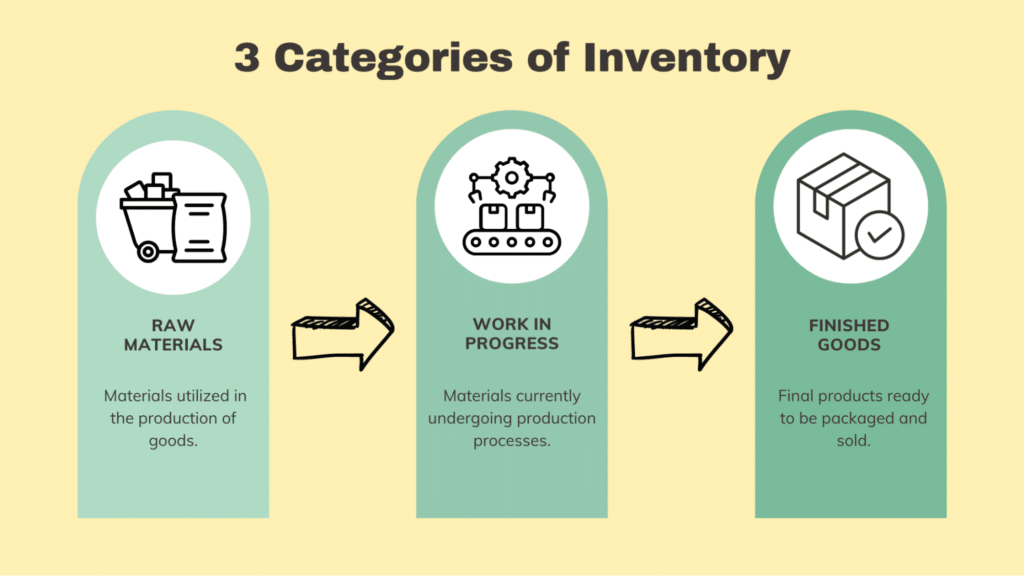Inventory management is at the heart of every business and is essential for smooth operation. Even in small enterprises where inventory tracking might seem manageable with paper or spreadsheets, minor errors or miscounts can lead to significant financial losses as production and demand increase.
Businesses of all sizes encounter various challenges in inventory management. Whether it’s excessive stockpiling, product spoilage, or production delays, inadequate inventory management inevitably leads to a host of problems that can negatively impact finances and reputation.
In this article, we will explore the fundamentals of inventory management, discuss strategies for effective stock control, and highlight common pitfalls to avoid when navigating its complexities.
Understanding Your Inventory
Inventory management involves overseeing all activities related to company’s inventory, from when it is received from the supplier until it is either sold to a customer or utilized in the production of a service or product. Throughout this process, the company must maintain accurate and up-to-date information regarding the quantity of items received from suppliers, their storage locations, and the replenishment needs based on demand fluctuations.
Every business is unique and has various inventory needs. Some businesses, for example, are like small grocery stores that receive daily deliveries and must closely manage perishable goods to prevent overstocking or running out of high-demand items. On the other hand, some enterprises have more intricate inventory processes involving the shipment, storage—on-site or off-site—and utilization of items in producing goods, which are then stored until sold.
Inventory is typically classified into three primary categories, although this list may expand based on industry specifics and the complexity of production functions. Let’s examine each category using the example of a small business specializing in handmade skincare products.

Raw materials
These are the materials utilized in the production of goods. In our example, they may include carrier oils, essential oils, butter, lip gloss bases, etc. Essentially, raw materials encompass all the components stored by the business and used in the manufacturing process to create finished products.
Work in progress
This category comprises items that have progressed beyond the raw material stage but are still undergoing processing and are not yet ready for sale. For instance, it could be a batch of hand soap put away to harden before it is cut and packaged for sale.
Finished goods
These are the final products that have been fully manufactured and packaged and are ready to be displayed on shelves or dispatched to customers. Examples include jars of body butter, bottles of facial cleanser oil, or gift boxes containing the business’s best-selling products, all prepared and awaiting distribution.
In addition to the primary categories of inventory, businesses can benefit from tracking additional types, such as:
- MRO Supplies (Maintenance, Repair, and Operations): These encompass supplies necessary for the maintenance and upkeep of business operations. For instance, in our beauty store example, this may include cleaning supplies for mixers, lip gloss machines, as well as gloves, and disposable aprons.
- Packing Materials: Often overlooked, packing materials are also parts of the inventory. Failure to track these items properly can lead to unforeseen costs accumulating over time.
- Seasonal Inventory: This involves stocking up on additional inventory in anticipation of higher demand during specific times of the year or holiday seasons. It is closely related to safety stock inventory.
- Safety Stock refers to extra inventory stored in warehouses to eliminate the risk of stockouts and production delays. Safety stock may consist of items that are particularly challenging to restock quickly.
- Allocated Inventory: These are finished products that are ready for sale but are still stored in the warehouse and reserved for specific customers awaiting shipment or pickup. Tracking allocated inventory helps ensure the timely fulfillment of customer orders.
Setting Up an Efficient Inventory Management System

Now that we have outlined inventory components, the pressing question emerges: How can businesses effectively track it all? While traditional methods like paper records and spreadsheets have served their purpose, they may no longer suffice in today’s fiercely competitive market. As production processes become more complex, maintaining control over all inventory categories becomes increasingly challenging.
Even minor miscounts can quickly lead to common problems associated with poor inventory management, such as excessive stockpiling of supplies, which results in unnecessary expenses—a critical concern for small businesses. On the other hand, inadequate stock levels can delay production, leading to dissatisfied customers.
In response to these challenges, many businesses are turning to secure and innovative inventory management systems. Modern solutions have rapidly replaced outdated tracking methods and continue to develop.
One key benefit of automated inventory management systems is real-time visibility across all inventory categories. These systems typically generate automatic inventory reports, enabling businesses to identify items that need to be ordered less frequently, those that are often understocked, and even pinpoint suppliers with a history of late deliveries that disrupt production schedules.
Moreover, these systems offer features such as real-time updates and notifications to alert businesses of any issues that need immediate attention.
7 features to look for in an inventory management system:
- Real-time inventory data: Access to real-time data provides clarity on inventory management and enables tracking of stock levels anytime, anywhere.
- Integration: Seamless integration with Point of Sale (POS) systems ensures streamlined processes across the business, connecting inventory with accounting for accurate reports.
- Stock Keeping Unit (SKU) Inventory Organization: SKUs offer unique codes for each product, facilitating efficient availability tracking, warehouse location, store presence, and identifying product shortages.
- Efficient planning: Analytical tools help optimize inventory by analyzing demand for different products, reducing spending on slow-moving items, and ensuring adequate supply for high-demand products.
- Scalability: Ensure the system accommodates business growth by ability to add more inventory items, categories, and management features without constraints imposed by subscription plans.
- Analysis and Reporting: Make sure the management system provides such features as advanced reporting, warnings, and recommendations based on analytical data, simplifying inventory management processes.
- Security: Custom access levels enhance security by controlling employee access to specific inventory data.
Effective Stock Control Techniques

Another crucial aspect of inventory management is the distinction between various stock control techniques. Businesses are presented with different accounting methods to facilitate financial reporting, regulatory compliance, taxation adherence, and performance overview. While multiple options exist, we will discuss the three most common methods in detail.
First-In-First-Out (FIFO)
This method assumes that the oldest inventory is sold first. It follows the logic that the inventory acquired earliest was utilized first in production and will consequently be sold first. FIFO is widely utilized in accounting practices due to its simplicity and straightforwardness. The ending inventory valuation is based on the cost of more recently acquired items, while the cost of goods sold reflects current market prices more accurately.
Last-In-First-Out (LIFO)
In contrast to FIFO, the Last-In-First-Out (LIFO) method assumes that the newest inventory is sold first. However, it is important to note that LIFO is restricted in its application, as most countries, excluding the USA, do not permit its use.
Companies may choose LIFO, particularly during periods of inflation, as it aligns the latest inventory costs with current revenues. This can result in lower net income and, consequently, reduced taxes. The lower gross profit associated with LIFO stems from the cost of goods sold (COGS) being based on the cost of the newest inventory, which tends to be more expensive due to rising prices during inflation periods.
It is worth mentioning that LIFO is a more complex method and can potentially distort the ending inventory valuation.
Just-In-Time (JIT)
As the name implies, this method revolves around maintaining inventory levels that match demand requirements. This approach benefits businesses aiming to avoid overspending on excess inventory or managing perishable goods. Additionally, JIT reduces the need for extensive warehouse space.
However, caution is necessary when implementing JIT, as it relies heavily on accurate demand forecasting. Businesses must ensure that the limited inventory can be promptly replenished to increase production if demand surges. Successful implementation of JIT requires sufficient inventory data and a management system equipped with analytical features to predict demand accurately. Moreover, diligent tracking by employees overseeing inventory operations is essential for effectively executing this method.
Avoiding Common Inventory Mistakes

As you are navigating the field of inventory management, ensure you avoid these common mistakes businesses make.
- Neglecting important inventory categories: Ensure that all purchases necessary for production are tracked as inventory to create accurate spending and profit statements.
- Lack of thorough control: Double-checking incoming inventory from suppliers is crucial to avoid mistakes. Assigning this responsibility to specific employees can help prevent errors and discrepancies.
- Poor warehouse organization: A cluttered warehouse can hinder inventory management effectiveness. Implement proper organization to prevent items from being lost or overlooked.
- Inefficient inventory count systems: Annual inventory audits are time-consuming and may miss ongoing issues. Implement cycle counts, which involve auditing select smaller inventory portions regularly over some time to detect and correct mistakes promptly. When common mistakes are detected, the solutions can also be applied to other inventory groups.
- High potential for human error: Implement automation and technology, such as inventory management systems and warehouse barcode scanners, to reduce common human errors in inventory and order management.
Next Step
In summary, we’ve explored key aspects of inventory management that are essential for enhancing efficiency and transparency throughout your business operations.
At NOVA Retail Solutions, we offer businesses a comprehensive management system designed to streamline and optimize all aspects of operations, from inventory and sales to accounting and employee management. Our platform is tailored for small businesses and provides a centralized platform for managing and scaling your business using the latest technological advancements.
Discover how NOVA can uniquely support your business needs. Join many of our satisfied clients who are growing their businesses daily with our innovative solutions. Request a demo of Nova POS to streamline your inventory management today!






